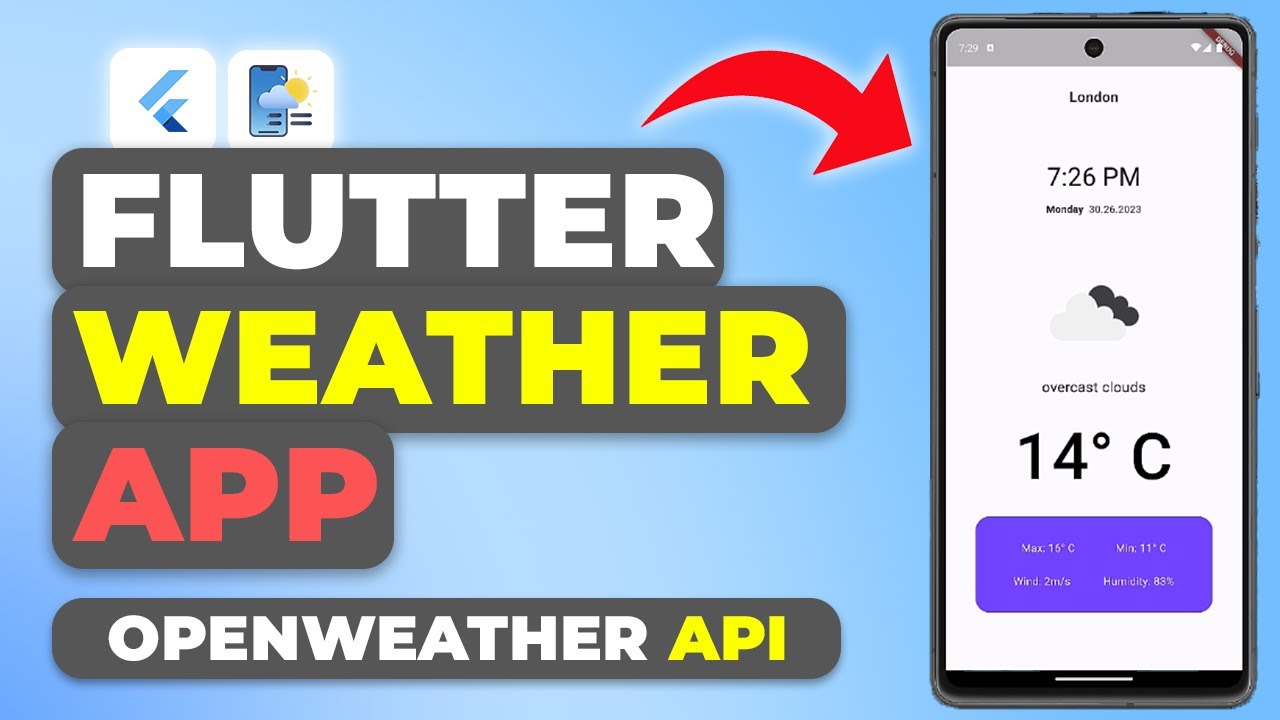Django is a high-level Python web framework that encourages rapid development and clean, pragmatic design. Built by experienced developers, it takes care of much of the hassle of web development, so you can focus on writing your app without needing to reinvent the wheel. It’s free and open source.
Django’s online documentation is a great source of information, but sometimes you’d rather glance quickly at an example. This Django cheat sheet has some sample code. Just grab it and go!
Start a new Django project
# Create et access project folder
~$ mkdir project_name
~$ cd project_name
# Create Python virtual env
~$ python3 -m venv venv
# Activate virtual env
~$ source venv/bin/activate
# If you want to deactivate virtual env
~$ deactivate
# Install django (~= same as 3.1.*)
~$ pip install django~=3.1.0
# New django project (from project_name folder)
~$ django-admin startproject config .
# Create app (from project_name folder)
~$ python manage.py startapp app_name
Migration:
Django create a database table for each models present in your app using thoses commands:
- Makemigrations: Create a file under app_name/migrations with the database structure to create
~$ python manage.py makemigrations
- Migrate: Will read the migrations files and create the actual database and tables
~$ python manage.py migrate
Create superuser for authenficiation/admin panel
~$ python manage.py createsuperuser
Start Django Server
~$ python manage.py runserver => ex. http://127.0.0.1:8000
Requirements
# Create a requirements file that contain all your projet dependencies
~$ pip freeze > requirements.txt
# Install your project requirements (if a requirements file exist)
~$ pip install -r requirements.txt
Other commands
# Django shell (Run projet code direclty)
~$ python manage.py shell
# example of code to run in the shell:
>>> from app_name.models import User
>>> user1 = User.objects.first()
# Prepare static folders for production
$ python manage.py collectstatic
# Take all data from app blog and export in json
python manage.py dumpdata blog >myapp.json
# Take all data in json file and import in app data table
python manage.py loaddata myapp.json
Project config
# Add app to settings.py
INSTALLED_APPS = [ … , 'app_name' ]
# App templates folder
create folder appfolder/templates/appname
# Project templates folder:
create folder projectname/templates
# settings.py template config
Project templates settings.py:
TEMPLATES = [
{ …
'DIRS': [BASE_DIR / 'templates', ],
… }
# Create Static folder:
project_namestatic
# Static folder (settings.py):
STATIC_URL = '/static/'
STATICFILES_DIRS = [ BASE_DIR / 'static' ]
STATIC_ROOT = 'static_root'
# To use PostgresSQL
# pip install psycopg2
# settings.py
DATABASE = {
'default': {
'ENGINE': 'django.db.backends.postgresql',
'NAME': 'blog',
'USER': 'admin',
'PASSWORD': '123456',
'HOST': 'localhost',
'PORT': '5432'
Create data model:
Theses models can be created as database tables with the migrations commands
# models.py
# The id fields is automaticly created by Django for each model that why it's not show below
from django.db import models
class Customer(models.Model)
name = models.Charfield('Customer', max_length=120)
age = models.IntegerField()
note = models.TextField(blank=True, null = True)
email = models.EmailField(max_length=255, blank=True, null=True)
credit = models.FloatField(blank=True)
is_active = models.BooleanField(default=True)
created_at = models.DateTimeField(auto_now_add=True)
updated_at = models.DateTimeField(auto_now=True)
# Select Field (return value, display value)
TYPE_CHOICES = (
('Customer', 'Customer'),
('Supplier', 'Supplier'),
('Student', 'Student'),
)
type = models.CharField(choices=TYPE_CHOICES)
Model string representation
class Customer(models.Model):
name = models.Charfield('Customer', max_length=120)
age = models.IntegerField()
def __str__(self):
return self.name
Relationship between models
# One-to-Many: (use double quotes if the entity is not yet declare) ex. "Supplier"
supplier = models.ForeignKey(Supplier, blank=True, null=True, on_delete=models.CASCADE)
# on_delete can be set to models.CASCADE, models.ST_DEFAULT or models.SET_NULL
# Many-to-Many:
tags = models.ManyToManyField(Tag, blank=True)
# One to One
User = models.OneToOneField(User, on_delete=models.CASCADE)
# Overwrite save method
def save(self, (*args, **kwargs):
if not self.slug:
self.slug = slugify(self.title)
super().save(*args, **kwargs)
Admin panel:
Every Django projects come with an Admin Panel that can be open at /admin url (ex: localhost:8000/admin), To display the model in the Admin panel register the model in the app_name/admin.py file
from .models import Blog
admin.site.register(Blog)
Customize Admin Panel
For each models you can specify the fields you want to use
# Custom model Admin (admin.py):
class BlogAdmin(admin.ModelAdmin)
fields = ("title", "description") # Fields to use for add/edit/show page
list_display = ("title", "description") # fields to display in search page
list_display_links = ("title") # fields that will be a link in search page
ordering("date_created",) # Ordering allowed in the search page
search_fields("title", "description") # Search fields allowed in the search page
# Register app
admin.site.register(Blog, BlogAdmin)
Routing:
Django routing info is store in project_folder/urls.py file
from django.contrib import admin
from django.urls import path, include
urlpatterns = [
path('admin/', admin.site.urls), # pre-created admin urls routes
path('', include('app_name.urls')) # include your app urls
]
the ‘include()’ method allow to link another urls.py file created in your app folder (app_name/urls.py)
from django.urls import path
from . import views
url patterns = [
path('posts', views.index, name='posts.index'),
path('posts/create/', views.create, name='posts.create',
path('posts/<int:id>/', views.show, name='posts.show'),
path('posts/<int:id>/edit/', views.edit, name='posts.edit'),
path('posts/<int:id>/delete/', views.delete, name='posts.delete'),
]
Static route
from django.conf import settings
from django.conf.urls.static import static
urlpatterns += static(settings.STATIC_URL, document_root=settings.STATIC_ROOT)
Function Based Views
# views.py
from django.shortcuts import render, redirect
from .models import Post
from .forms import PostForm
def index(request):
# Get all Posts
posts = Post.objects.all()
# Render app template with context
return render(request, 'appfolder/index.html', {'posts': posts})
def show(request, id):
post = Post.objects.get(id=id)
return render(request, 'appfolder/show.html', {'post': post})
def create(request):
form = PostForm(request.POST or None)
if form.is_valid():
# optionally we can access form data with form.cleaned_data['first_name']
post = form.save(commit=False)
post.user = request.user
post.save()
return redirect('/posts')
return render(request, 'appfolder/create.html', {'form': form)
def edit(request, id):
post = Post.objects.get(id=id)
form = PostForm(request.POST or None, instance=post)
if form.is_valid():
form.save()
return redirect('/posts')
return render(request, 'appfolder/edit.html', {'form': form)
def delete(request, id):
post = Post.objects.get(id=id)
post.delete()
return redirect('/posts')
Class based Views
from django.views.generic import TemplateView, ListView, DetailView, CreateView, UpdateView, DeleteView
class LandingPageView(TemplateView):
template_name = 'landing.html'
# Optional: Change context data dict
def get_context_data(self, **kwargs):
context = super().get_context_data(**kwargs)
context['title'] = 'Landing Page'
return context
class PostsListView(ListView):
queryset = Post.objects.all()
# Optional
# context_object_name = "posts" (default: post_list)
# template_name = 'posts.html' (default: posts/post_list.html)
class PostsDetailView(DetailView):
model = Post # object var in template
# Optional
# template_name = 'post.html' (default: posts/post_detail.html)
class PostsCreateView(CreateView):
form_class = PostForm
template_name = 'posts/post_create.html' # no default value
def get_success_url(self):
return reverse('posts-list')
# Optional: Overwrite form data (before save)
def form_valid(self, form):
if self.request.user.is_authenticated:
from.instance.author = self.request.user
return super().form_valid(form)
class PostsUpdateView(UpdateView):
model = Post
form_class = PostForm
template_name = 'posts/post_update.html'
def get_success_url(self):
return reverse('post-list')
# Optional: Change context data dict
def get_context_data(self, **kwargs):
context = super().get_context_data(**kwargs)
context['submit_text'] = 'Update'
return context
class PostsDeleteView(DeleteView):
model = Post
template_name = 'posts/post_delete.html'
success_url = reverse_lazy('posts-list')
# Urls.py route declaration
path('<int:pk>/update/', PostsUpdateView.as_view(), name='post-update')
Django Template:
Templates are store in project_folder/templates or in your app_folder/templates/app_name/*.html
{% extends 'base.html' %}
{% block content %}
{% endblock %}
{% include 'header.html' %}
{% if user.username = 'Mike' %}
<p>Hello Admin</p>
{% else %}
<p>Hello User</p>
{% endif %}
{% for product in products %}
<p>The product name is {{ product }}<p>
{% endfor %}
{{ var_name }}
Template variables formating
{{ title | lower }}
{{ blog.post | truncatwords:50 }}
{{ order.date | date:"D M Y" }}
{{ list_items | slice:":3" }}
{{ total | default:"nil" }}
Current path (ex. posts/1/show)
{{ request.path }}
URL by name with param
{% url 'posts.delete' id=post.id %}
Use static in template:
{% load static %}
{% static 'css/main.css' %}
Model Managers and Querysets:
Model manager allow model database reads and writes
# One line create and save
Article.objects.create(name='Item 1', price=19.95)
# Read all
Article.objects.all()
# Create
user = User.objects.first()
article = Article(user=user, name='Item 1', price=19.95)
# Save
article.save()
# Read one
Article.objects.get(id=1)
# Select Related (to avoid n+1 query)
posts = Post.objects.select_related('user', 'category').all()
# Read or render a 404 not found page
from django.shortcuts import get_object_or_404
article = get_object_or_404(Article, id=512)
# Filter
Article.objects.filter(model='dyson', name__icontains='dyson') # __icontains
Article.objects.filter(year__gt=2016) # __gt = greater than
Article.objects.filter(year__lt=2001) # __lt = less than
# Filter on relationship sub model field
Article.objects.get(user__username='mike')
# Ordering
Article.objects.order_by('name') # ascending
Article.objects.order_by('-name') # descending
# Slicing return first
Article.objects.all().order_by('name')[0]
# Slicing return last
Article.objects.all().order_by('-name')[0]
# Slicing limit/offset
Article.objects.all().order_by('name')[1..10]
# Updating
article = Article.objects.first()
article.name = 'new name'
article.save()
# One line update
Article.objects.filter(id=4).update(name='new name')
# Deleting
article = Article.objects.first()
article.delete()
# One line delete
article.objects.get(id=1).delete()
# Delete all
Article.objects.all().delete()
# Set ForeignKey field value
model1 = Model(name='dyson')
article.model = model1
# Get ForeignKey value
article1.model.name
model1.article_set.all()
# Add Many-to-Many
article1.tags.add(tag1)
article1.tags.all()
tag1.articles_set.all()
Form (forms.py)
from django import forms
class ArticleForm(forms.Form):
name = forms.Charfield(max_length=100)
description = forms.Charfield(blank=True, null = True)
# Model Form
from django.forms import ModelForm
from .models import Article
class ArticleForm(ModelForm):
class Meta:
model = Article
fields = ['name', 'description', 'price'] # Use '__all__' for all fields
# Render form in template
<form method=“post” action=“” novalidate>
{% csrf_token %}
{{ form }}
<button type="submit">Submit</button>
</form>
# Bootstrap (pip install django-crispy-forms + installed_apps: 'crispy_forms')
{% load crispy_forms_tags %}
{{ form|crispy }}
{{ form.email|as_crispy_field }}
# crispy-tailwind
pip install crispy-tailwind
# settings.py
CRISPY_ALLOWED_TEMPLATE_PACKS = 'tailwind'
CRISPY_TEMPLATE_PACK = 'tailwind'
# template usage
{% load tailwind_filters %}
{{ form|crispy}}
Form validation
# forms.py
from django.core.exceptions import ValidationError
# field validation
def clean_first_name(self):
data = self.cleaned_data['first_name']
if data = 'Mike':
raise ValidationError('Your name must not be Mike')
return data
# form validation
def clean(self):
first_name = self.cleaned_data['first_name']
last_name = self.cleaned_data['last_name']
if first_name + last_name = 'MikeTaylor':
raise ValidationError('Your name must not be Mike Taylor')
Flash messages
messages.success(request, 'Login successful')
messages.error(request, 'Login error')
# Message tags
# debug, info, success, warning and error
# Display flash in template
{% if messages %}
{% for message in messages %}
{% message %}
{% message.tags %}
User model (pre-created)
# Get a reference to Django pre-created User model
from django.contrib.auth import get_user_model
User = get_user_model()
# Or if you want to custom user model
from django.contrib.auth.models import AbstractUser
class User(AbstractUser):
# add custom fields and methods
# To make Django use that model go to settings.py and add: AUTH_USER_MODEL = 'app_name.User'
Authentification: LoginView
# LoginView is already pre-created by Django
from django.contrib.auth.views import LoginView
# Add a url to reach that view
path('login/', LoginView.as_view(), name='login')
# By default the LoginView will try to open a template name 'registration/login.html' and send a login form with it.
# Create a template under registration/login.html
{% extends "base.html" %}
{% block content %}
<form method="post">
{% csrf_token %}
{{ form }}
<button type="submit">Login</button>
</form>
{% endblock content %}
# When user click the Login button, the LoginView will try to authenticate the user with the form username ans password.
# If successful il will then login the user and redirect to LOGIN_REDIRECT_URL specified in your settings.py
Authentification: LogoutView
# LogoutView is already pre-created by Django
from django.contrib.auth.views import LogoutView
# Add a url to reach that view
path('logout/', LoginView.as_view(), name='logout')
# Include a link in a template
<a> href="{% url 'logout' %}">Logout</a>
# After link is execute, the user will be logout and redirect to LOGOUT_REDIRECT_URL specified in your settings.py
Authentification: SignupView
# Create a SignupView (that view is not created by default)
# import sinupview form pre-created by Django
from django.contrib.auth.forms import UserCreationForm
from django.views.generic import CreateView
class SignupView(CreateView):
template_name = 'registration/signup.html'
form_class = UserCreationForm
def get_success_url(self):
return reverse("login")
# Create template: registration/signup.html
{% extends "base.html" %}
{% block content %}
<form method="post">
{% csrf_token %}
{{ form }}
<button type="submit">Signup</button>
</form>
{% endblock content %}
# Add a url to reach that view
from posts.views import SignupView
path('signup/', SignupView.as_view(), name='signup')
# Optional: Customize the UserCreationForm
# (forms.py)
from django.contrib.auth import get_user_model
from django.contrib.auth.forms import UserCreationForm
User = get_user_model()
class CustomUserCreationForm(UserCreattionForm):
class Meta:
model = User
fields = ['username']
fields_classes = {'username': UsernameField}
Optional pre-created authentification routes
# urls.py
urlpatterns += path('', include('django.contrib.auth.urls'))
# /login, /lougout, /signup, etc.
Template Authentification helpers
# Authentication links
<a href="{% url 'login' %}">Login</a>
<a href="{% url 'signup' %}">Signup</a>
<a href="{% url 'logout' %}">Logout</a>
# Check if user login
{% if request.user.is_authenticated %}
Logged in as: {{ request.user.username }}
{% endif %}
Authorization: LoginRequiredMixin and login_required
from django.contrib.auth.mixins import LoginRequiredMixin
# Restrict views to auth user only (views.py)
class PostsCreateView(LoginRequiredMixin, generic.CreateView):
...
...
from django.contrib.auth.decorators import login_required
@login_required(login_url='/login')
def search_page(request):
...
...
Manual Authentification, Login and Logout
from django.contrib.auth import authenticate, login
def login_page(request):
if request.method == "POST":
username = request.POST.get("username")
password = request.POST.get("password")
user = authenticate(request, username=username, password=password)
if user is not None:
login(request, user)
return redirect("index")
return render(request, "registration/login.html", {})
def logout_page(request):
logout(request)
return redirect("index")
User Change password
# set_password will hash the password
user.set_password('raw password')
Send Email
# settings.py
EMAIL_BACKEND = "django.core.mail.backends.console.EmailBackend"
# Send email function
from django.core.email import send_mail
send_mail(
subject = "A new post has been created",
messsage = "Go to the web site to see the detail",
from_email = "test@test.com",
recipient_list = ["test2@text.com"]
)
Signals
# models.py
from django.db.models.signals import post_save, pre_save
def post_user_created_signal(sender, instance, created, **kwargs):
if created:
UserProfile.objects.create(user=instance)
# Launch the post_user_create_singal method if User model is save
post_save.connect(post_user_created_signal, sender=User)
Seed
from .models import Product, Category
from django.shortcuts import HttpResponse
from faker import Faker
def seed(request):
Product.objects.all().delete()
Category.objects.all().delete()
category = Category()
category.name = "Sports"
category.save()
category = Category()
category.name = "Home"
category.save()
fake = Faker()
for _ in range(100):
product = Product()
product.name = fake.unique.word()
product.short_description = fake.sentence()
product.main_picture = fake.image_url()
product.price = fake.random_digit() * 10
product.category = Category.objects.order_by('?').first()
product.save()
return HttpResponse('Seeded')
.env key/value file
$ pip install django-dotenv
add code to manage.py file
import dotenv
def main():
"""Run administrative tasks."""
dotenv.read_dotenv() #add this line
...
...
Create a file name ‘.env’ in the root folder of your project
SECRET_KEY = 'your secret key'
ALLOWED_HOST=127.0.0.1
In settings.py change security related settings to point to the .env file
import os
SECRET_KEY = os.environ.get('SECRET_KEY')
ALLOWED_HOSTS = os.environ.get('ALLOWED_HOSTS')











Leave a Reply